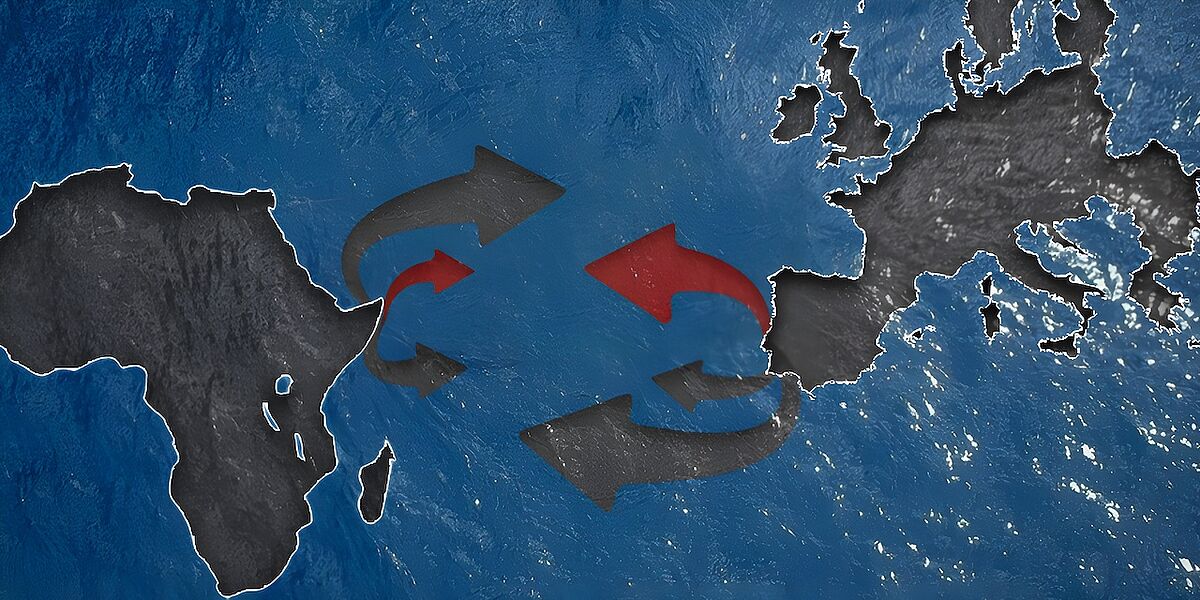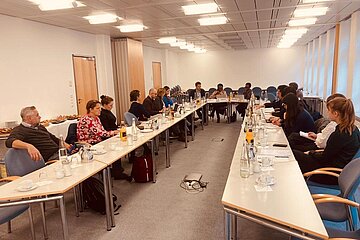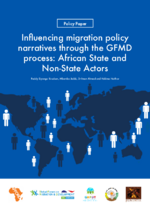EU-Africa Cooperation on Migration

According to the IOM, while most of migration movements in Africa remain within the continent (21 million), some 18 million Africans live outside of the Africa. Those diaspora communities are mainly found in three regions: around 11 million Africans reside in European countries while 5 million live in the Middle East and 3 million have migrated to Northern America. Due to geographical proximity of and connections in countries of destination, Northern Africa accounts for a majority of Africa to Europe migration with Egypt, Morocco and Algeria featuring in the top five countries of origin for African migrants in 2020. However, West and East African migrants also attempt to migrate to Europe – irregularly whenever regular migration routes are not available.
In recognition of the collective action principle enshrined in recent policy frameworks for the governance of Migration, the Europe-Africa cooperation on the management of migration has gained immense momentum in recent times. While partnership between Africa and the European Union is identified as a traditional form of partnership, the first formal Africa-EU Summit was held in Cairo in 2000 with the two continents agreeing to work on different thematic areas and to collaborate on migration issues.
In the context of migration, the EU has several forms of partnership with different stakeholders in the African continent. The first form of partnership is the continent-to-continent collaboration which identifies the EU and the AU as main partners working on common goals of migration governance. The second type of collaboration are regional cooperation arrangements with countries in different sub-regions of the continent. The Rabat Process which includes 55 countries from West, North and Central Africa and Europe as well as the European Commission and the ECOWAS was launched in Rabat during the first Euro-African Ministerial Conference on Migration and Development in July 2006. The Khartoum Process is also another regional cooperation between the two continents focusing on five countries in the East and Horn of Africa (Egypt, Eritrea, Ethiopia, South Sudan and Sudan), five European countries (Germany, Italy, France, the UK and Malta) as well as the European Commission, the European External Action Service and the AU Commission.
The third form of partnerships between the two continents are bilateral agreements with selected countries. Examples of such partnerships can be bilateral agreements with countries like Morocco, Tunisia, Cape Verde and Nigeria and are usually aimed at achieving certain targets or curbing certain migration challenges. Recently, Skills Mobility Partnerships – a concept emerging from the New York process and the resulting Global Compact on Migration – have emerged as bilateral agreements between states in Africa and Europe.
Recognizing the long EU-Africa partnership and in line with the Migration Policy Framework for Africa and Plan of Action (2018-2030), the European Agenda for Migration, and other global migration policy frameworks, FES-AMPC aims to facilitate further collaborative migration policy dialogue, giving priority to mutual understanding and reciprocity.
Our latest Activities
Contact
Friedrich-Ebert-Stiftung
African Migration Policy Center
Arada Kifleketema
Queen Elizabeth II street
P.O. Box 8786
Addis Ababa, Ethiopia








